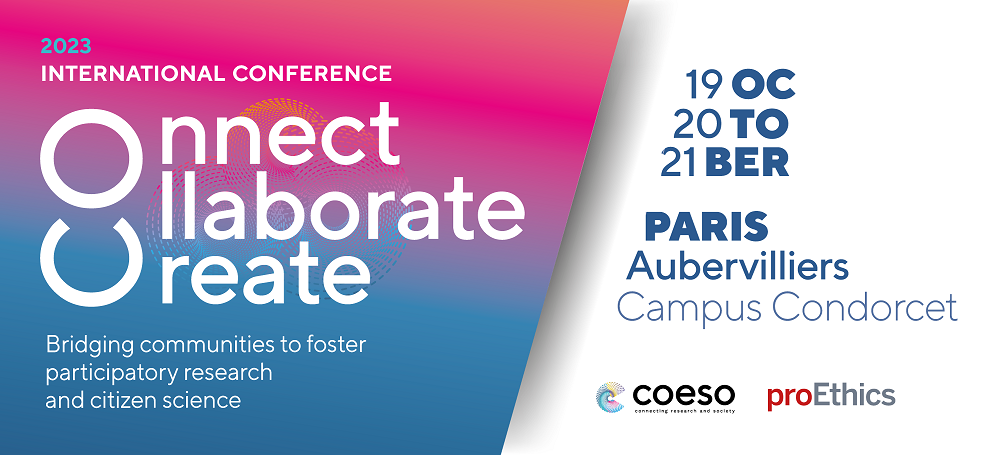
|
|
|
Participant Involvement > Conference Design#Collaborate4Research
The Connect.Collaborate.Create conference is designed to be interactive, beginning with designing workshops and panels together. Until September 5th, when you register, you'll have the opportunity to submit an idea for a contribution. With your permission, that idea will be transfered onto a shared Miro board for all active participants to see and comment on until September 7th. The ideas from the Miro board will be used to create the final program for the conference. Creating a Conference by and for its AttendeesWhen we started to plan this conference we asked, how can the collaborative spirit of participatory research and citizen science be brought to a conference format? How can we best showcase the work that is being done in citizen science while engaging attendees to become more than audience members but practitioners and participants? In response, the COESO and PRO-Ethics projects created a digital space dedicated to the participation and collaboration of Citizen Science practitioners across Europe and inspired by the “un-conference” and THATCamps styles. This spirit is summed up by the name of the conference: Connect.Collaborate.Create. What is an “un-conference” then?It goes by multiple names (also BarCamp) but it has been particularly impactful in the humanities under the THATCamp (The Humanities and Technology Camp) model. THATCamps aim to encourage collaboration and concrete work with informal, on-the-spot planning, without lengthy proposals and a singular voice. It aims, as we do in participatory research practices and citizen science, to decenter the voice and open it up to the attendees to voice their needs and best practices. Three characteristics of the “un-conference” (directly from the THATCamp website) jump out at us:
Connect. Collaborate. Create.And so, we have adopted this “un-conference style”, and adjusted it to begin the collaboration of conference attendees before it even starts. When you sign up you will be invited to propose the workshops you would like to lead and participate in. Propose whatever ideas you have! Even if they aren’t fully developed. Upon approval based on the themes of the conference (see the topic list on the Submit your ideas page) you will be invited to a Miro Board, an online collaborative tool, to see your’s and others’ proposals and indicate which ones (and in which capacity) you are interested in collaborating: Are there people at the conference you want to work with? Is there a particular topic you can contribute to? What other projects might you want to collaborate with? From here you can begin to collaborate with others to fully develop your workshop! Check out this video on how the pre-conference collaboration will look! This format avoids many of the traditional pitfalls of a conference and the feeling of being talked-at. Rather than static conversation where one’s individual project must be put on hold for networking (of course there will be ample opportunities for meaningful networking at the conference) this allows everyone to be a contributor. We can walk into the conference looking forward to creating something, to meeting people, and to mixing into a community where our goals are common. It’s just more fun too! And remember the ThatCamp inspired “RULE OF TWO FEET”. If something doesn’t pique your interest, feel free to move/create another workshop! In the online collaborative tool (Miro Board), you will find others’ proposals and be able to comment on those you want to work with. Take a look at the instructions for how to use it here!
Would you like to participate in the Miro board? All registered participants who submit an interactive contribution suggestion will be sent a personal invitation giving them access to interact on the Miro board. If you have already registered as a passive conference participant, but you now want to participate in the Miro board, please send an email to John [john.williams@openedition.org]. More details on how to submit an idea can be found on the Submit your ideas page. |

